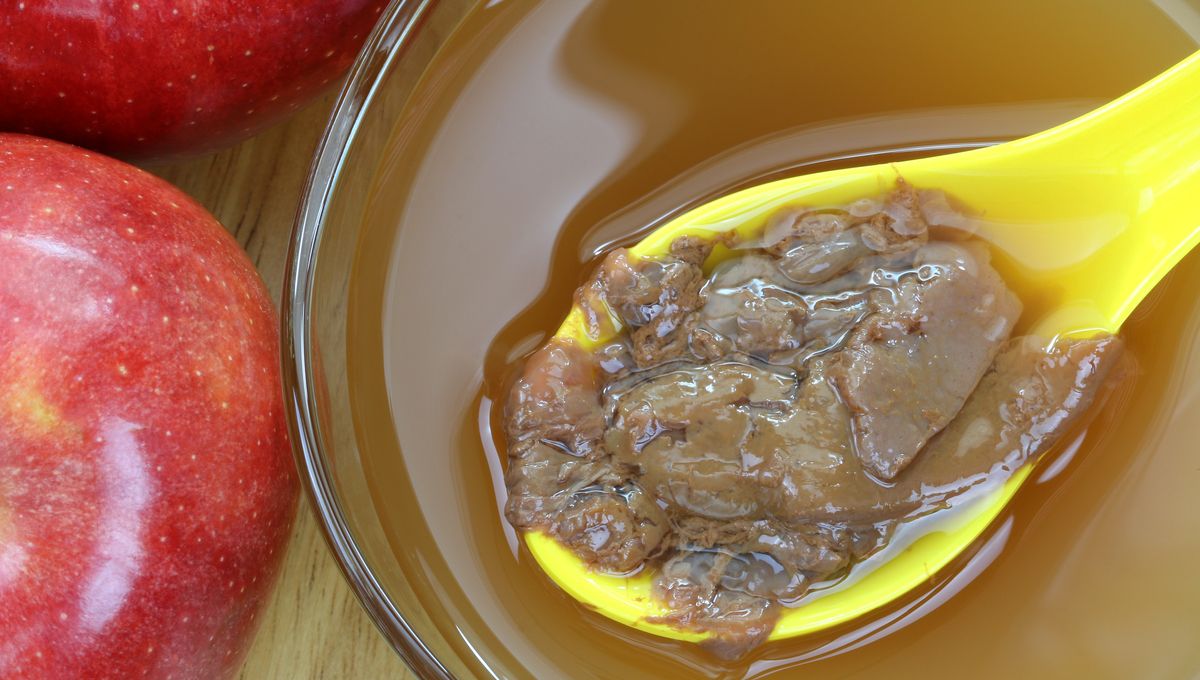
Have you ever bought a bottle of vinegar with a claim on the label that it contains the “mother”? Once you bring it home and peer more closely into the bottle you’ll see a slimy blob at the bottom – this is the mother of vinegar.
What is vinegar?
Vinegar has been around for thousands of years. The Babylonians used vinegar made from the date palm as a preserving and pickling agent. In ancient Greece, Hippocrates recommended honey to be mixed with cider vinegar to help treat colds and coughs.
Vinegar comes from the old French for “sour wine”, and as the name indicates leaving wine open to air causes a process that transforms it into a pungent and acidic product. Typically, vinegar is made in two steps. The first converts simple sugars to ethanol using yeast. The second step converts ethanol to acetic acid using bacteria, typically from the genus Acetobacter.
The base of vinegar can come from many different origins: apple, grape, rice, wholegrains, and potatoes.
What is the mother of vinegar?
Not all vinegars contain the mother, as it is normally removed during pasteurization or filtration. Sometimes a mother is not even required, as the acetic acid bacteria can be found in the air. However, this would be a slower vinegar-making process.
The mother is a gray (although other colors do occur) biofilm called the “veil” and Johann Wolfgang Döbereiner once described it as a “fungoid growth”, but we now know it is made up of yeast, cellulose, and bacteria that turn the alcohol into acetic acid when exposed to oxygen.
Not all mothers have the same bacteria present. One study found that Acetobacter okinawensis was mainly found in apple-origin vinegar samples, while in those from grape Komagataeibacter europaeus dominated, followed by Acetobacter indonesiensis.
What is the mother of kombucha?
Kombucha is a slightly acidic fermented drink that also has a mother (called a symbiotic culture of bacteria and yeast, or SCOBY) that originates from the fermentation of tea. Although it shares similarities with the vinegar mother, the bacteria in the kombucha mother are adapted to the fermentation of tea.
While vinegar requires two distinct fermentation steps, kombucha performs both steps simultaneously. Another key difference is tolerance to acidity: the mother of vinegar thrives in high levels of acetic acid, while the kombucha mother cannot.
Due to these differences, the kombucha mother can be used to create vinegar, but the vinegar mother can’t be used to make kombucha.
Can you eat the mother of vinegar?
It may look like an unpleasant gray blob, but it does not pose a health risk and is safe to consume. If you are still looking at it and don’t want to consume any of it, you can easily filter it out using a coffee filter.
The mother of vinegar might look like a grape mistake, but it’s the real yeast of your worries. So go ahead, embrace the blob – it’s brew-tifully natural!
Source Link: The Slimy Blob At The Bottom Of The Vinegar Bottle Is The Mother